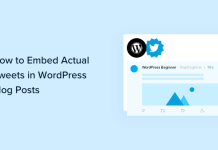Step 1: Understand Your Content
Identify key topics or themes in your post. Effective tags represent the main ideas, locations, or people discussed in the article, allowing users and search engines to locate relevant content quickly.
Step 2: Use Specific and Relevant Tags
Use unique, specific tags that directly relate to your post content. Avoid generic terms (e.g., “news”) and instead use distinct phrases (e.g., “U.S. economy 2024” or “electric vehicles benefits”).
Step 3: Limit the Number of Tags
Use 5–10 tags per post for clarity and effectiveness. Too many tags dilute the focus and may reduce search optimization.
Step 4: Avoid Overlapping Tags and Categories
Ensure tags are distinct from categories to avoid redundancy. Categories cover broader topics, while tags should pinpoint specific content details.
Step 5: Research Keywords for High SEO Impact
Utilize keyword tools like Google Trends or Ubersuggest to identify high-traffic keywords related to your post. Incorporating these terms as tags can improve visibility on search engines.
Step 6: Regularly Review and Update Tags
Periodically review tags across posts to ensure consistency and relevance, improving content findability and SEO effectiveness over time.
Recommended Tools
- Google Trends: To explore trending search terms.
- Yoast SEO (WordPress Plugin): For tag suggestions and SEO optimization within posts.
By following these guidelines, you’ll ensure that your WordPress tags enhance search discoverability, directing readers and search engines to your content effectively.







